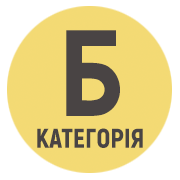LONG-BLADED WEAPONS IN THE UKRAINIAN LANDS IN THE 8TH–14TH CENTURIES: IMPORT AND CULTURAL-TECHNOLOGICAL EXCHANGE
DOI:
https://doi.org/10.32782/2307-7778/2025.1.11Keywords:
arms import, blacksmithing, Rus, Middle Ages, trade routes, technology transferAbstract
The article explores the phenomenon of sword importation into the territory of Kyivan Rus dur- ing the 8th–11th centuries, as well as the subsequent trade and cultural exchange of military technologies in the 12th–14th centuries. Particular attention is paid to the analysis of the dissemination routes of long-bladed weapons, their typological characteristics, and technological features of production. The introductory part of the article outlines the historical context of the emergence and spread of Carolingian swords as examples of Frankish weaponry of the early Middle Ages, highlighting the development of metallurgy and arms manu- facturing in the Frankish Empire, particularly in the Rhine region. The role of Eastern craftsmen, especially Syrian blacksmiths, in the refinement of European blade-processing technologies is emphasized, which led tothe emergence of high-quality weapons that were actively imported into the territory of present-day Ukraine.The aim of the study is to identify the specific features of cultural exchange in military technologies between Kyivan Rus, Western Europe, Scandinavia, Byzantium, and the Arab world. The objectives are to ana- lyze the cultural and technological aspects of weaponry, to reconstruct the routes of military-trade exchange, and to determine the role of Rus as a subject of international arms trafficking. The study concludes that Rusplayed an active role in the transfer of weapons technology both to the East (Volga Bulgaria, the Arab Cali-phate) and to the West (Scandinavia, Hungary, France), serving not only as an importer but also as an exporterof armaments, particularly bladed weapons.The conclusions highlight that long-bladed weaponry in Rus’ territory serves as evidence of a multi-vector cultural dialogue, in which military affairs acted as one of the key channels for the transmission of technologies, artistic practices, and craft traditions. In the 13th–14th centuries, under the new political con- ditions – the Mongol invasion, the formation of the Galicia-Volhynia Principality, and the incorporation of Ukrainian lands into the Grand Duchy of Lithuania – the network of military-trade exchange underwent signif- icant transformations. The import of weapons from Europe and Asia continued, particularly through Poland,Hungary, Crimea, and the Caucasus, which influenced the evolution of local arms production. Thus, long-bladed weapons became not only military instruments but also material evidence of the extensive transcultural connections of the medieval period.
References
Коба О. О., Коваль О. А. Клинкова зброя VIII–Х ст. на території давньої Русі. Археологія і давня історія України. 2013. Вип. 10. С. 210–216.
Moilanen M. Viikinkimiekat Suomessa. Helsinki. Kustantaja Suomalaisen Kirjallisuuden Seura, 2018. 264 p.
Contreni J. The Carolingian renaissance: education and literary culture. The New Cambridge Medieval History. Cambridge : Cambridge University Press, 1995. P. 709–757.
Böheim W. Handbuch der Waffenkunde. Das Waffenwesen in seiner historischen Entwickelung vom Beginn des Mittelalters bis zum Ende des 18. Jahrhunderts. Wiesbaden : Fourier Verlag, 1985. 570 p.
Oakeshott E. The Archaeology of Weapons: Arms and Armour from Prehistory to the Age of Chivalry. Martlesham. Boydell Press, 1960. 360 p.
Козак М. Торгівля зброєю на Русі. Актуальні проблеми. 2018. Вип. 21. С. 63–70.
Аркас М. Історія України-Руси. Одеса. Маяк, 1994. 389 с.
Терський С., Стрельченко О., Войнаровський В. Нові знахідки ранньосередньовічної зброї у р. Західний Буг. Вісник Національного університету «Львівська політехніка». 2014. № 809: Держава та армія. С. 7–12.
Печенюк І. Запозичення і взаємовпливи у розвитку озброєння давньоруського війська. Воєнна історія. 2003. № 2. Львів. Піраміда. С. 15–22.
Пасічник М. С. Історія України: державницькі процеси, розвиток культури та політичні перспективи. Київ : Знання, 2006. – 735 с.
Капустін К. Золотоординський час на землях Середнього Подніпров’я. Наука і суспільство. Київ, 2010. С. 56–58.
Капустін К. Київська земля в середині ХІІІ – ХV ст. Наукові записки. Серія: Історичні науки. Київ : Український державний університет імені Михайла Драгоманова, 2014. С. 47–54.
Палій Л. Мечі зброярень ULFBERHT та INGELRII на території Київської Русі. Проблеми історії війн і військового мистецтва. Львів, 2018. С. 89–106.







